Factsheet: On the Economic Potential of Agroecology
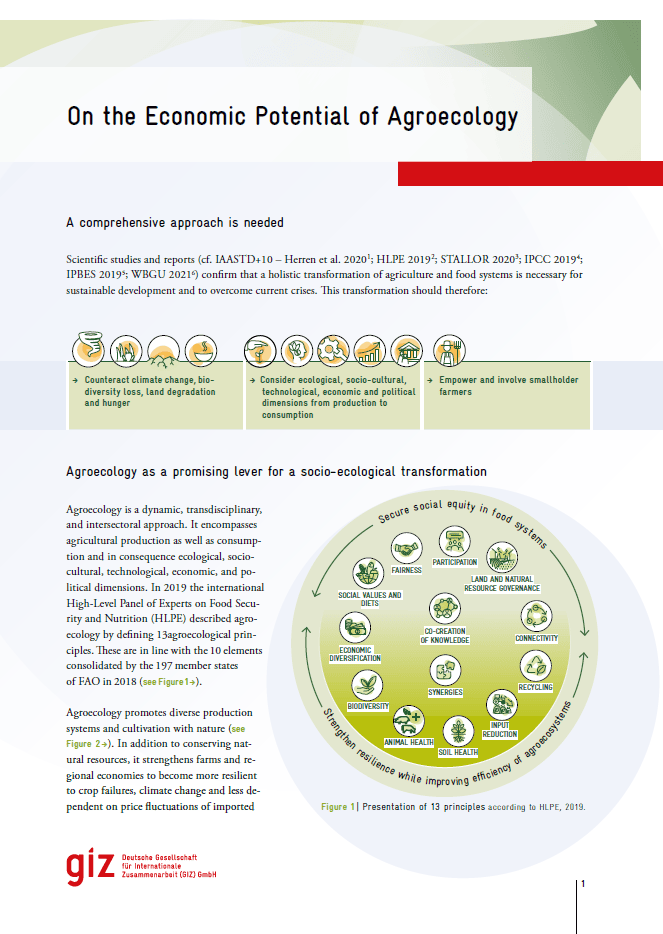
This factsheet gives an overview of the economic potential of agroecology – and shows that agroecological systems can be more profitable than conventional systems, depending on the context. Findings from an exemplary GIZ project underline that agroecology can lead to economic benefits.
Applying the CRISP tool in Bolivia and Zambia: Identifying climate risks and adaptation options in agricultural and food system projects
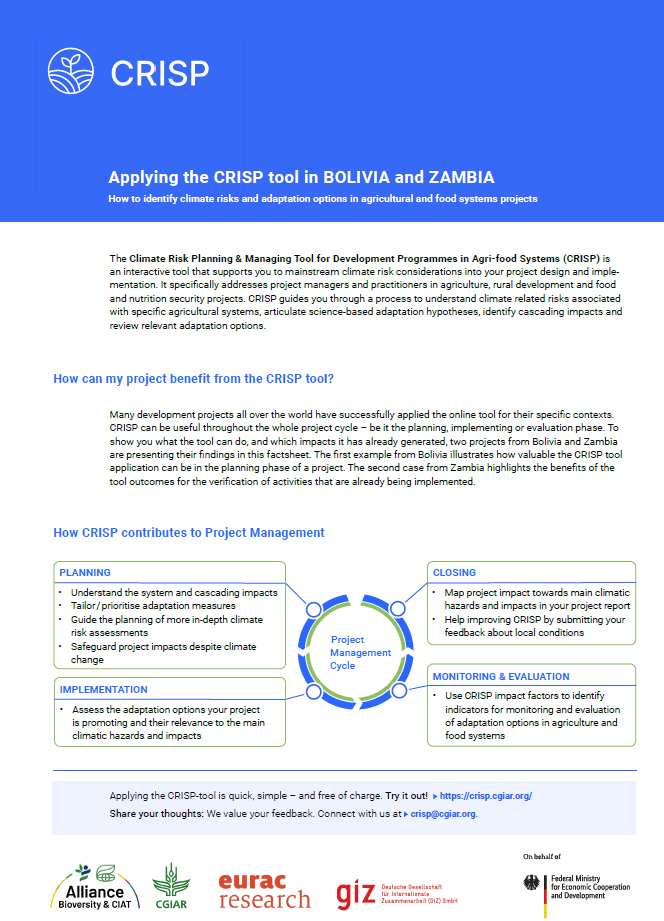
CRISP helps practitioners and policy makers in the agri-food sector to understand climate related risks, and to identify relevant adaptation options for their specific agricultural systems. This publication illustrates the practical application of the CRISP tool in Bolivia and Zambia. To show you what the tool can do, and which impacts it has already generated, two projects are presenting their findings in this factsheet.
Enhancing Risk Assessments (ERA) for Improved Country Risk Financing Strategies
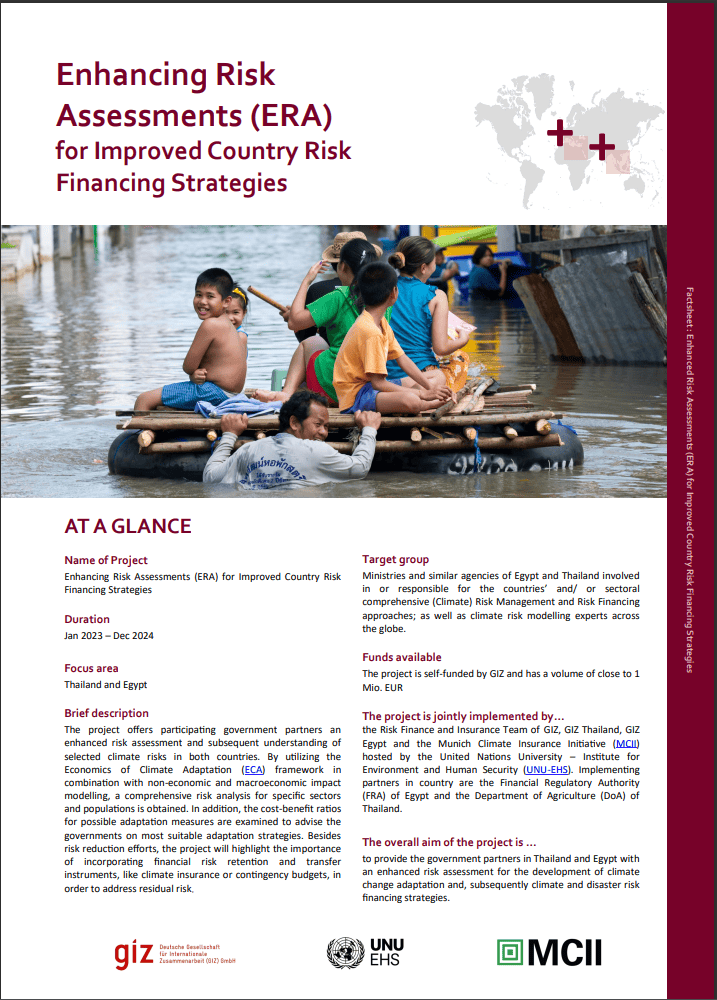
The overall aim of the ERA project is to provide the government partners in Thailand and Egypt with an enhanced risk assessment for the development of their adaptation and risk financing strategies. The project is implemented by GIZ together with the Munich Climate Insurance Initiative (MCII) hosted by the United Nations University.
Apprendre à vivre avec le changement climatique
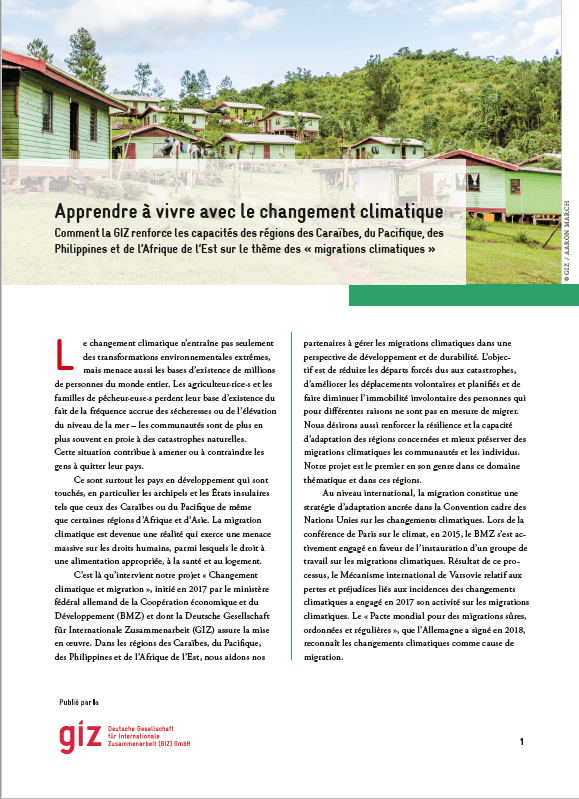
« Mon village est repris par la mer. » – La voix de Kaboua John tremble lorsqu’il raconte l’histoire de son île natale, Kiribati, un petit État du Pacifique, lors de la Conférence sur le climat de Bonn en 2017. Kiribati n’est pas un cas isolé: Le changement climatique menace de plus en plus les moyens de subsistance des populations du monde entier. En conséquence, les gens quittent leur domicile. Au cours des six dernières années, le programme « Mobilité humaine dans le contexte du changement climatique » a relevé ces défis dans des régions comme les îles du Pacifique, les Caraïbes, l’Afrique de l’Est et les Philippines. Apprenez-en davantage sur leurs histoires et sur la manière dont le programme a collaboré avec plusieurs partenaires pour lutter contre la migration induite par le climat.
Mit dem Klimawandel leben lernen
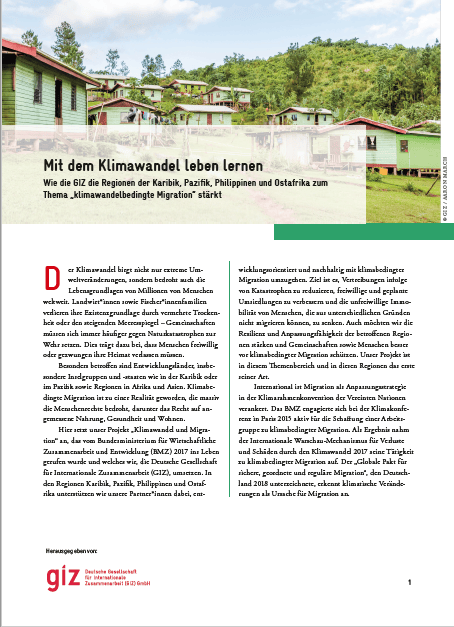
“Mein Dorf versinkt im Meer.” – Kaboua Johns Stimme zittert, als er auf der Bonner Klimakonferenz 2017 die Geschichte seiner Heimatinsel Kiribati, einem kleinen Pazifikstaat, erzählt. Kiribati ist kein Einzelfall – vielmehr bedroht der Klimawandel zunehmend die Lebensgrundlagen der Menschen weltweit. Infolgedessen verlassen die Menschen ihre Heimat. In den vergangenen sechs Jahren hat das Global Vorhaben “Menschliche Mobilität im Kontext des Klimawandels” diese Herausforderungen in Regionen wie den Pazifischen Inseln, der Karibik, Ostafrika und auf den Philippinen angegangen. Lesen Sie mehr über ihre Geschichten und darüber, wie das Vorhaben mit verschiedenen Partnern zusammengearbeitet hat, um die klimabedingte Migration zu adressieren.
Agroecology as Promising Lever for a Social-Ecological Transformation – Factsheet Agroecology
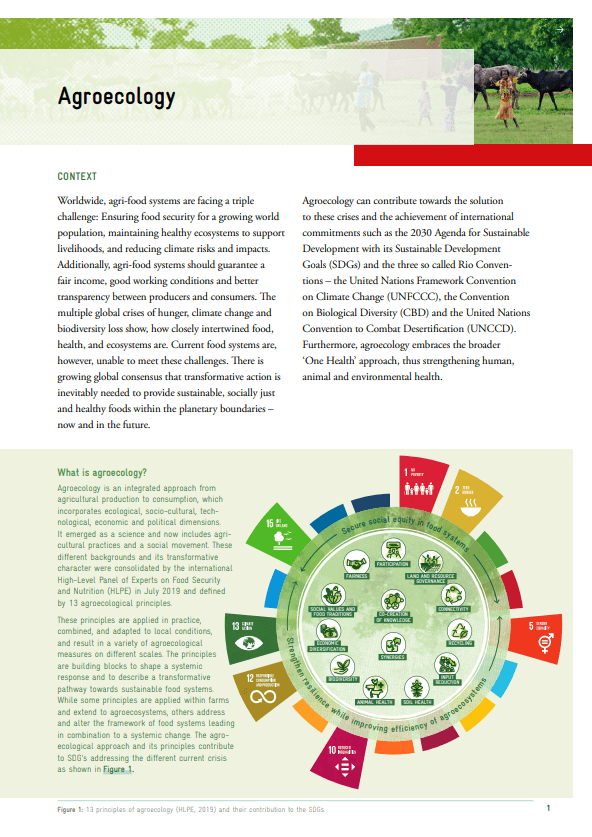
Agroecology is a transdisciplinary and inter-sectoral approach. The factsheet provides an overview on agroecology as a lever social-ecological transformation. It illustrates the relevance of agroecology for future-proof agriculture and food systems using examples from implemented GIZ projects.
Climate Resilient Jobs Perspectives Through Agroecology
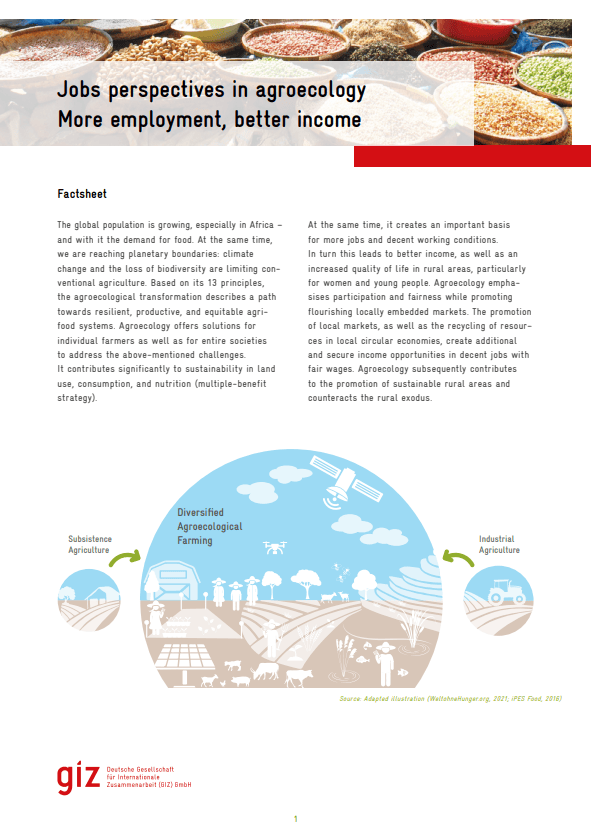
The factsheet illustrates the intersection of agroecology and rural employment. It explores how agroecology fosters climate change adaptation through biodiversity alongside employment promotion. Three dimensions are examined in particular: job creation, sustainable business opportunities and education.
Catálogo de Servicios Climaticos en Costa Rica
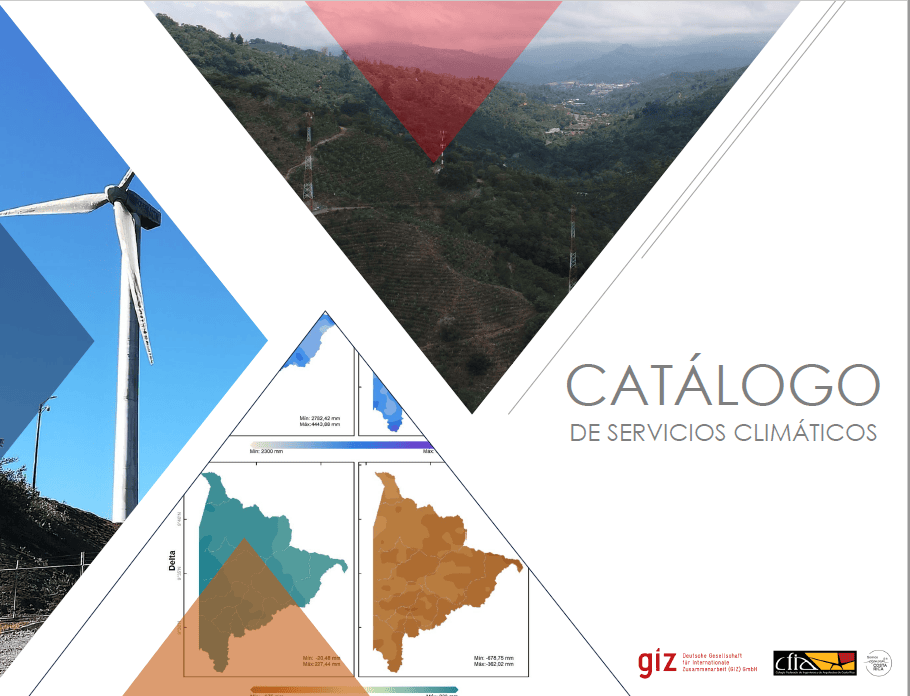
This Catalogue shows an overview of available Climate Services at the national level in Costa Rica.
Learning to live with Climate Change
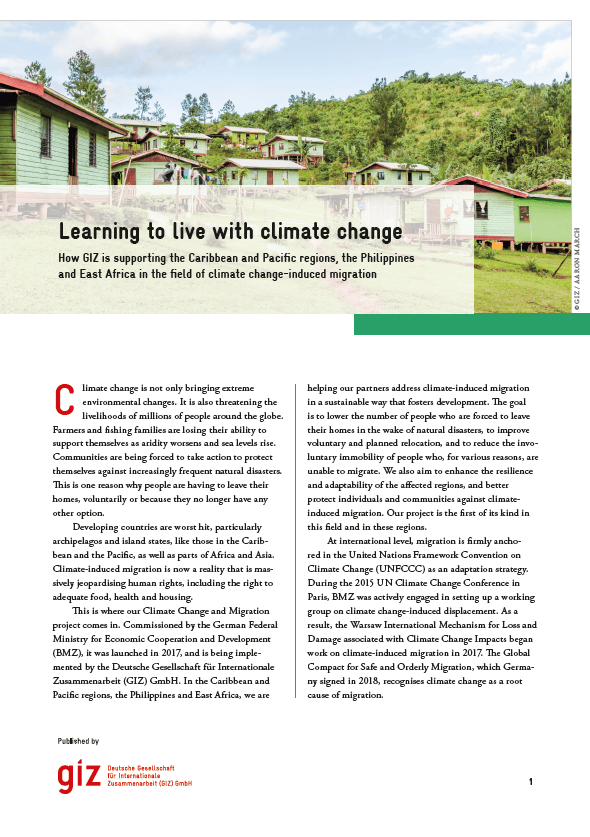
„My village is being taken back by the sea.” – Kaboua John’s voice trembles as he tells the story of his home island Kiribati, a small Pacific state, at the 2017 Bonn Climate Conference. Kiribati is not an isolated case – rather, climate change is increasingly threatening livelihoods of people worldwide. As a result, people leave their homes. Over the past 6 years, the Global Programme “Human Mobility in the Context of Climate Change” has been tackling these challenges in regions like the Pacific Islands, the Caribbean, East Africa and in the Philippines. Read more about their stories and how the programme has collaborated with multiple partners to address climate-induced migration.
Global Programme Human Mobility in the Context of Climate Change (HMCCC) – Intergovernmental Authority on Development (IGAD) Component
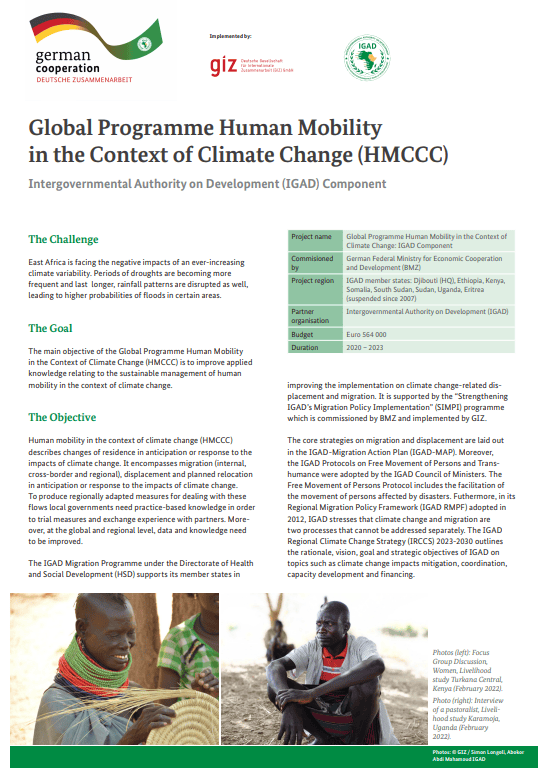
In East Africa, periods of droughts are becoming more frequent and last longer, rainfall patterns are losing their predictability, leading to higher probabilities of floods in certain areas. This significantly affects how, when, and why people move. To address the consequent challenges, the Global Programme “Human Mobility in the Context of Climate Change” supports one of Africa’s Regional Economic Communities, namely IGAD (Intergovernmental Authority on Development), to produce measures tailored to the region in order to help people adapt to a changing climate. Learn more about past achievements and ongoing activities in this factsheet.
